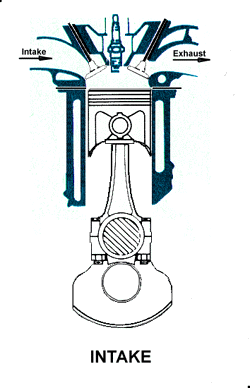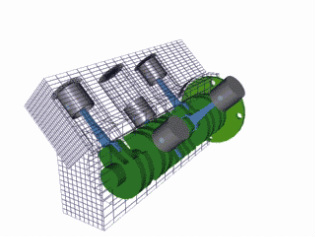Internal Combustion

Almost all cars currently use what is called a four-stroke combustion cycle
to convert gasoline into motion. The four-stroke approach is also known as the
Otto cycle, in honor of Nikolaus Otto, who invented it in 1867. The four strokes
are illustrated below. They are:
- Intake stroke
- Compression stroke
- Combustion stroke
- Exhaust stroke

- The piston starts at the top, the intake valve opens, and the piston moves
down to let the engine take in a cylinder-full of air and gasoline. This is the
intake stroke. Only the tiniest drop of gasoline needs to be
mixed into the air for this to work. - Then the piston moves back up to compress this fuel/air mixture.
Compression makes the explosion more powerful. - When the piston reaches the top of its stroke, the spark plug emits a spark
to ignite the gasoline. The gasoline charge in the cylinder
explodes, driving the piston down. - Once the piston hits the bottom of its stroke, the exhaust
valve opens and the exhaust leaves the cylinder to go out the tail
pipe. - Notice that the motion that comes out of an internal combustion engine is
rotational, while the motion produced by a potato cannon is
linear (straight line). In an engine the linear motion of the
pistons is converted into rotational motion by the crank shaft. The rotational
motion is nice because we plan to turn (rotate) the car's wheels with it
anyway.